The analytical instrumentation laboratory provides a wide range of services in the chemical analysis of dissolved and suspended matter in seawater and freshwater to faculty and students. The operation of SMALER is directed by Claudia Koerting, who also provides training and education to undergraduate and graduate students in analytical methods. Dr. Koerting also provides support for new method development and applications and methods can be tailored to the investigator’s needs. Analytical services are available by contract to other research institutions and government entities.
Instruments
|
-
Sample Preparation
- Muffling ovens
- Drying oven
- Ultrasonic water bath
- MilliQ water system
|
SmartChem nutrient analyzer
 Nutrient Analyzer Nutrient Analyzer
Analyzes nitrate, nitrite, ammonia, phosphate, silicate, chloride, silica, sulfate and sulfides, alkalinity and others
EPA protocols
Room 163
|
The HPLC
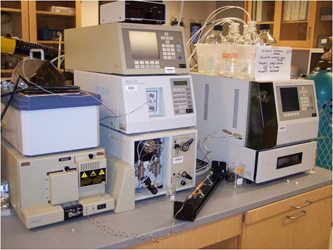
- High Pressure Liquid Chromatography
- Separation, detection and quantification of components in a solution
- PSPs, pigments, amino acids, and most non-corosive compounds providing you use the correct column and solvent system
- Room 163
- Log Book
The department provides the instrument, but you provide the solvents, column and parts. HPLC is a high volume producer of hazardous wastes, you are responsible for proper collection and pick-up. |
Spectrophotometers
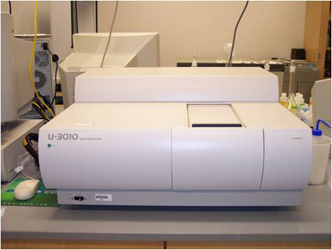 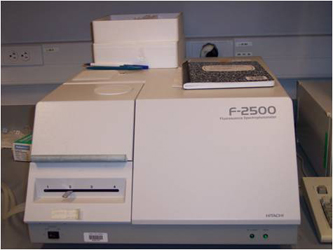
- UV/Vis scanning spectrophotometer
- Scanning spectrofluorometer
- Room 163
|
The CHN Analyzer
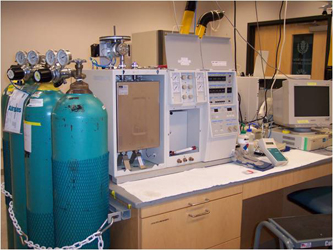
- Micro and macro determination of total nitrogen, carbon, and sulfur present in a wide range of organic and inorganic compounds
- Under supervision of Dam Lab, but kept in room 167 to share with others.
How the CHN analyzer works –
Complete and instantaneous oxidation of the sample by flash combustion (>1000 degrees C). Converts all ogranic and inorganic substances into comubstion products. Resulting combustion gases pass through the reduction furnace (650 degrees C) and are swept into the chromatographic column by the carrier gas (He). |
The TOC/TN Analyzer
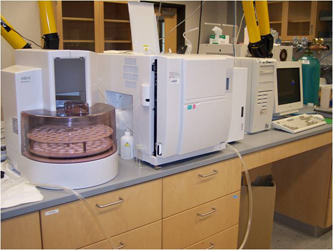
- Measures amount of carbon: inorganic and organic, as well as total nitrogen from the same injection
- Room 167
Principles of Analysis:
TC: sample introduced into the combustion tube, filled with an oxidation catalyst and heated to 680oC, converting the TC to CO2
After several more steps to remove moisture and halogens, the CO2 is delivered to an IR analyzer.
TN: decomposition of N compounds to NO by combustion at 720oC. After dehumidification NO is detected by a chemiluminescent gas analyzer.
Similar policies as with the other instruments:
Fill log book
Schedule use
Responsibility for consumables |
 Nutrient Analyzer
Nutrient Analyzer



